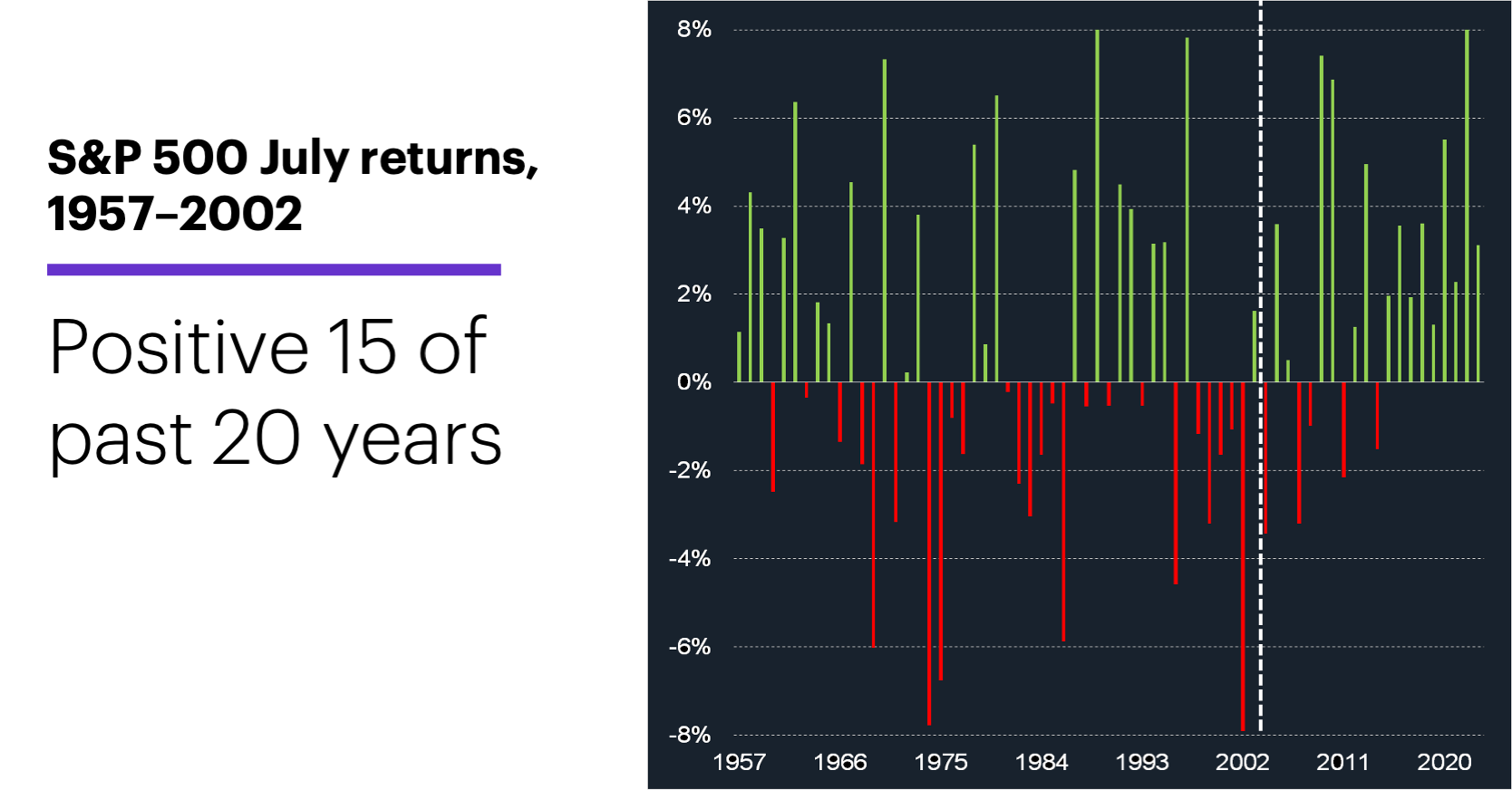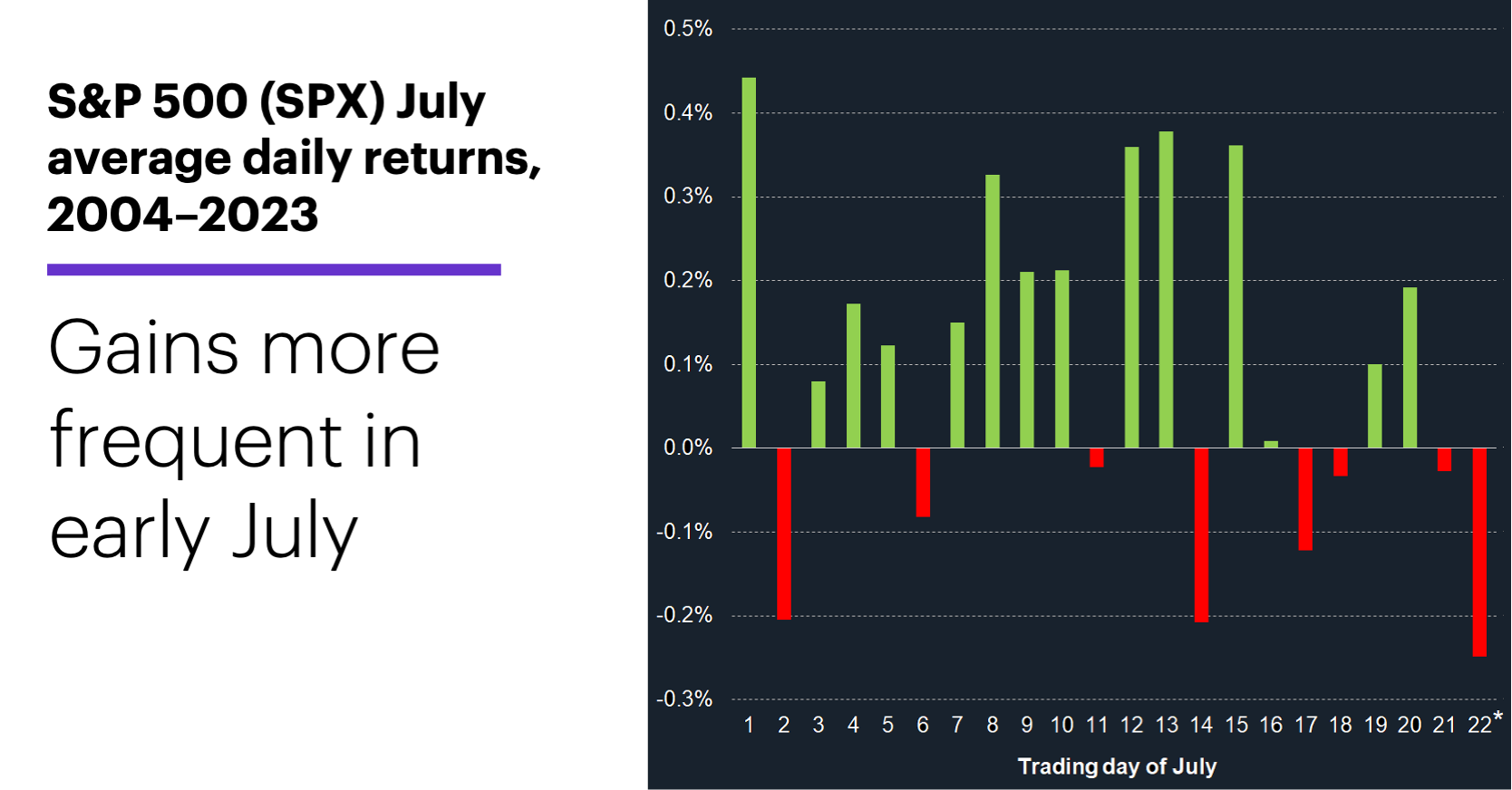July market patterns
- July a strong month for stocks since 2004
- Nine of past 10 Julys positive for S&P 500
- First day of July up 18 of the past 20 years
From the middle of the past century to the early years of the new millennium, July wasn’t much to write home about for stock market bulls. From 1957–2002, July was a down month for the S&P 500 (SPX) more often than it was up, and it also had the fourth-smallest median return (1%) of any month of the year.
All that would probably come as news to investors familiar with the market’s more recent history. Over the past two decades, July was positive 15 out of 20 times, including in nine of the past 10 years:

Source: Power E*TRADE (For illustration purposes. Not a recommendation. Note: It is not possible to invest directly in an index.)
Its average return since 2004 was relatively large—2.3%, which was second only to November’s. Also, the +3.6% average positive July was more than 50% larger than the -2.2% average negative July.1
The following chart shows July’s average returns for each trading day of the month during the bullish 2004–2023 period. Seven days had average returns of +0.2% or more, while only three had losses in excess of -0.2%:

Source: Power E*TRADE (For illustration purposes. Not a recommendation. Note: It is not possible to invest directly in an index. *Depending on the year, day 22 may represent the first trading day of August rather than the final trading day of July.)
Overall, up days were more frequent—and, on average, larger—earlier in the month. The chart below provides some additional context, mapping the percentage of times each day closed higher. A couple of highlights: The first trading day of July not only had the largest average positive return, it was also the day that closed higher most often (18 of 20 times). Similarly, day 14 had the second-largest average loss, and it also closed higher least often (seven of 20 times):

Source: Power E*TRADE (For illustration purposes. Not a recommendation. Note: It is not possible to invest directly in an index. *Depending on the year, day 22 may represent the first trading day of August rather than the final trading day of July.)
Of course, the question on many minds when reviewing this type of performance history will be whether July’s recent bullish tendences will continue, or if this year will mark a return to its more-bearish past. That, as always, will be determined by “facts on the ground” as the month unfolds.
Today’s numbers include (all times ET): PCE Price Index (8:30 a.m.), Chicago PMI (9:45 a.m.), Consumer Sentiment (10 a.m.).
Click here to log on to your account or learn more about E*TRADE's trading platforms, or follow the Company on Twitter, @ETRADE, for useful trading and investing insights.
1 All figures reflect S&P 500 (SPX) monthly and daily closing prices, 1957–May 2024. Supporting document available upon request. Note: Depending on the year, day 22 in charts 2 and 3 may represent the first trading day of August rather than the final trading day of July.